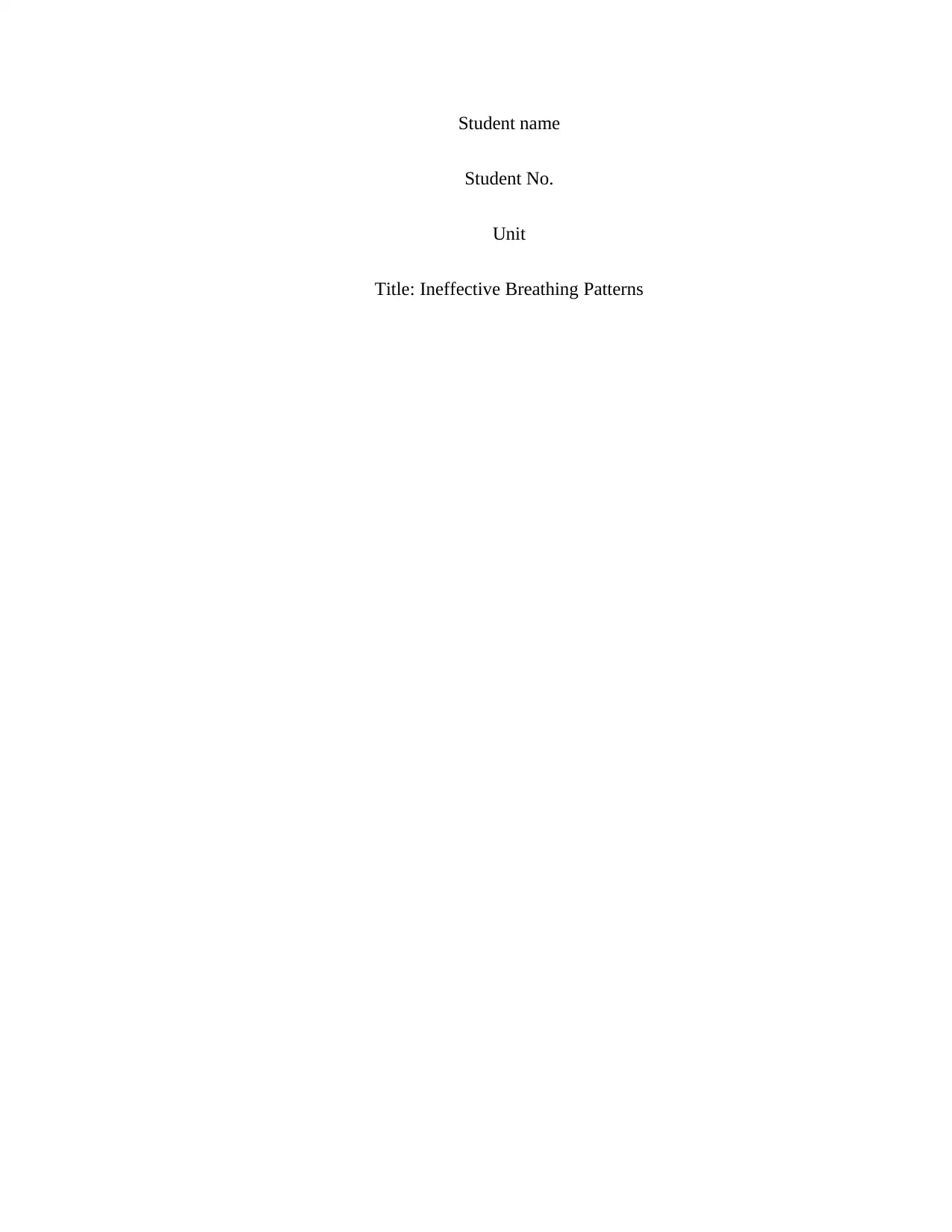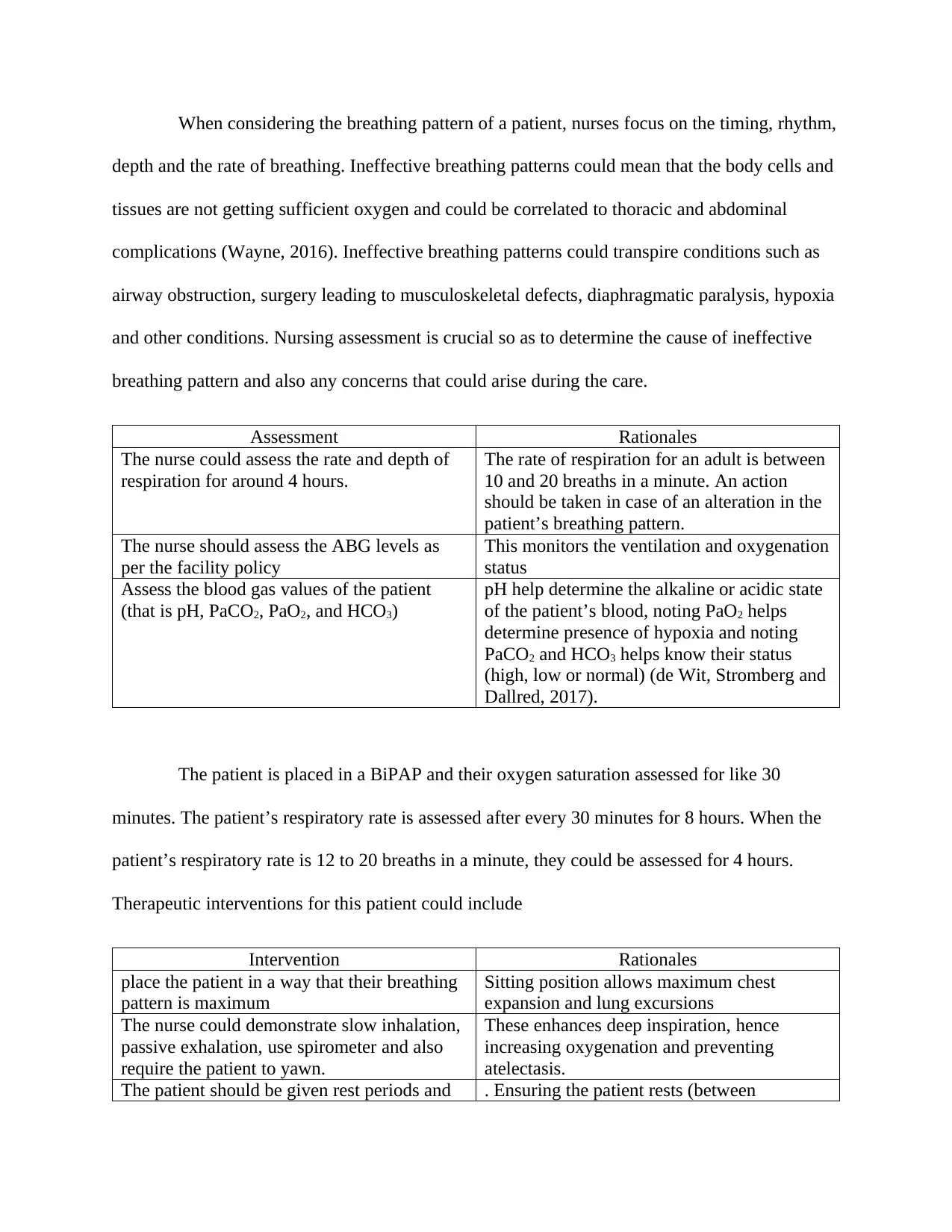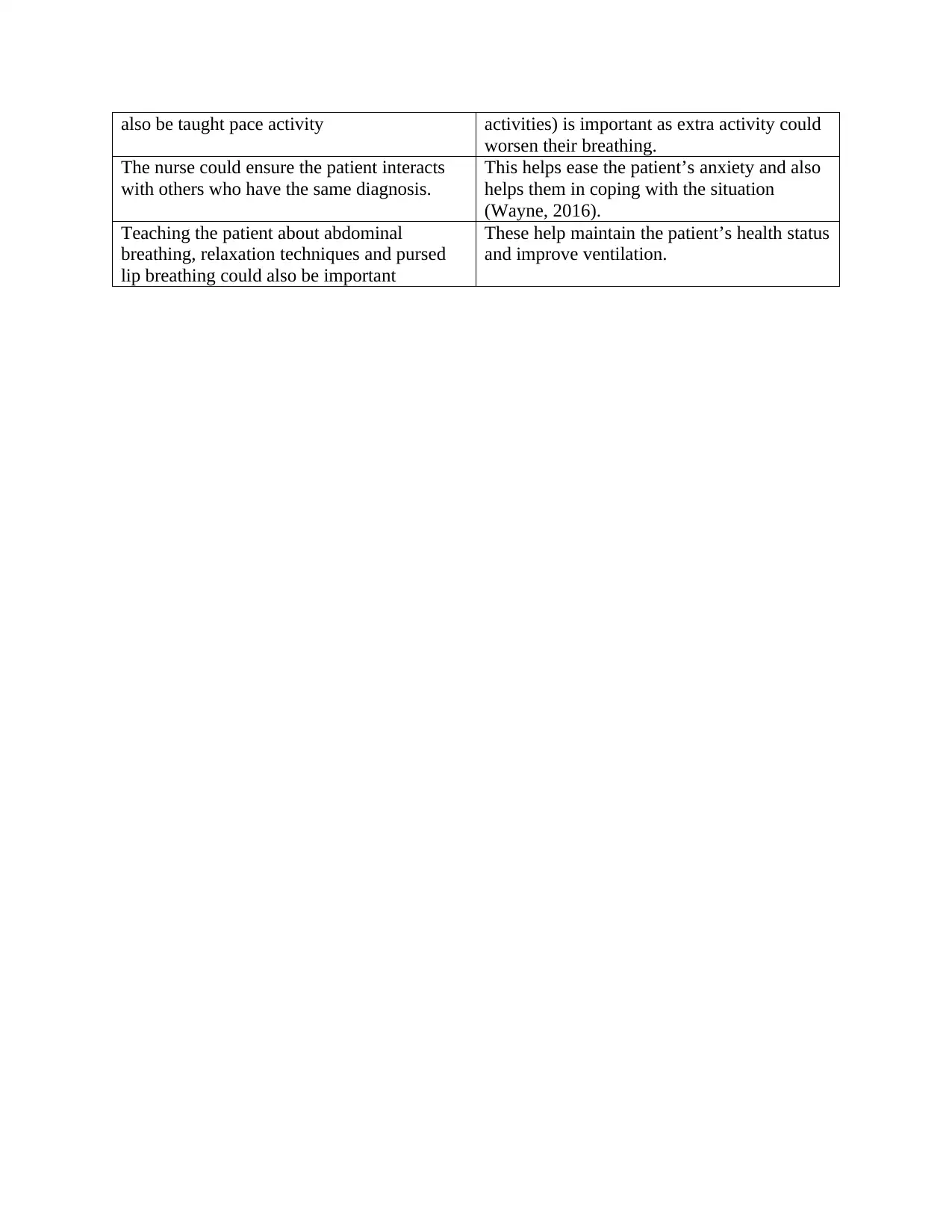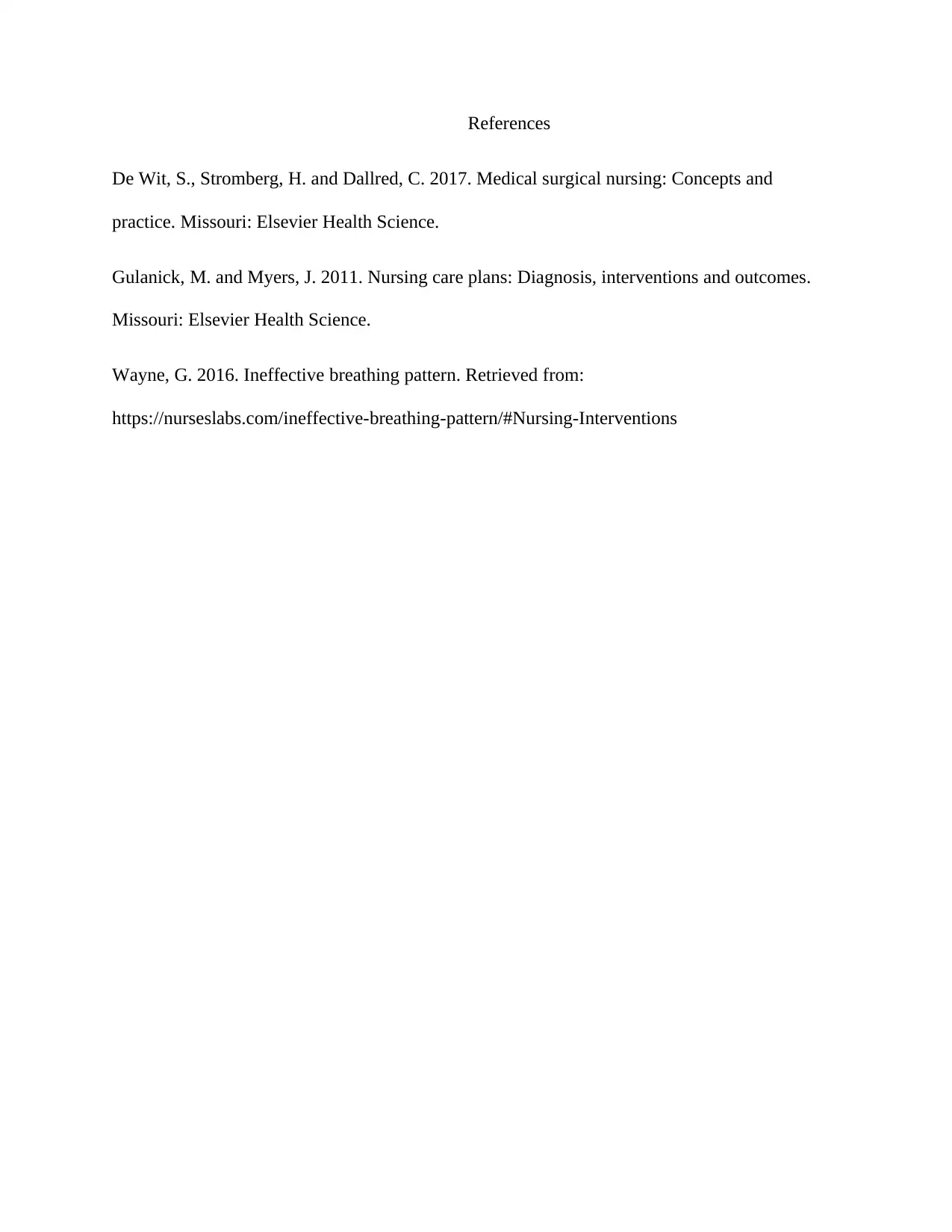Comprehensive Report on Nursing Care for Breathing Difficulties
VerifiedAdded on 2023/03/29
|4
|458
|50
Report
AI Summary
This nursing report delves into the complexities of ineffective breathing patterns, emphasizing the critical role of nurses in assessing and addressing this issue. It highlights the importance of monitoring the rate, depth, and rhythm of respiration, as well as analyzing arterial blood gas (ABG) levels to determine the underlying cause of breathing difficulties. The report outlines various therapeutic interventions, including positioning patients for optimal breathing, teaching relaxation techniques, and utilizing devices like spirometers and BiPAP machines. Furthermore, it underscores the significance of rest periods, patient interaction, and education on abdominal and pursed-lip breathing to improve ventilation, reduce anxiety, and enhance overall patient well-being. This comprehensive analysis provides valuable insights for nursing practice, aiming to improve patient outcomes in cases of ineffective breathing patterns. Desklib provides more solved assignments and resources for students.
1 out of 4











![[object Object]](/_next/static/media/star-bottom.7253800d.svg)